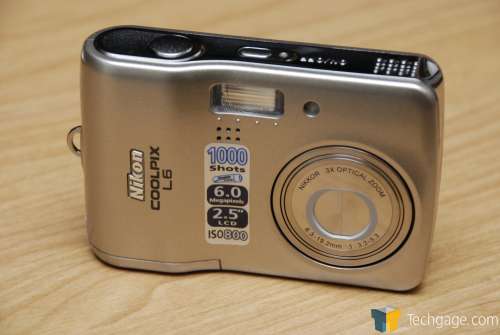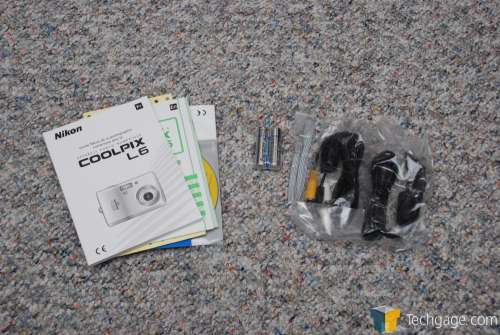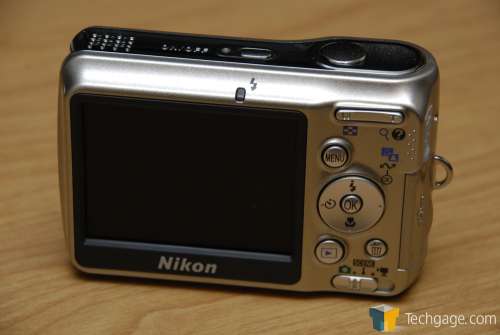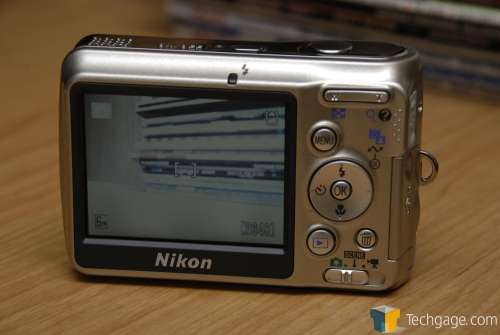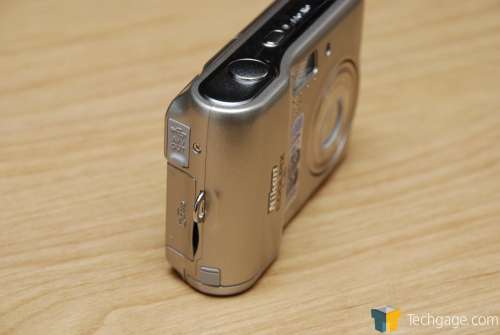- Qualcomm Launches Snapdragon 4 Gen 2 Mobile Platform
- AMD Launches Ryzen PRO 7000 Series Mobile & Desktop Platform
- Intel Launches Sleek Single-Slot Arc Pro A60 Workstation Graphics Card
- NVIDIA Announces Latest Ada Lovelace Additions: GeForce RTX 4060 Ti & RTX 4060
- Maxon Redshift With AMD Radeon GPU Rendering Support Now Available
Nikon Coolpix L6 6.0MP Digital Camera
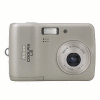
Nikon is not known as a company to slow down their release schedule, and currently they have a huge collection of point-and-shoot cameras. Today we are taking a look at a model from their lifestyle series, the six megapixel L6.
Page 1 – Introduction
|
|
Nikon has, in the past year, released close to 15 different cameras. These include everything from their lifestyle, style and performance series. Not to mention their new DSLR releases, the D40, D80 and D2xs. The camera market is always fast moving, and it becomes increasingly more difficult to know which camera to buy, since there are too many to choose from.
Todays camera is the L6, which is designed for those who “want a camera” that happens to have Nikon quality. That said, amazing things cannot be expected and it’s price agrees with that: $149.00. For that cost, it’s almost hard to go wrong with a purchase.
This is a rather simple camera, so this will not be one of our larger reviews. So what are we dealing with? Like many other cameras from Nikons L series, the L6 has a sensor capable of 6.0MP output. This results in an image size of 2816×2112 which weighs in at around 1.0MB – 1.2MB each.
The Nikkor lens has a focal range of 6.3-19.2mm (3x optical) with an aperture of f/3.2-5.3. One highlight is that the camera utilizes a huge 2.5" LCD screen for live view and also for reviewing images you’ve already taken.
Of course as is the common theme lately, Nikon does not include a viewfinder on any of their Point-and-Shoot cameras. The closest we will get to this is with their recently announced P5000, which compares closer to the D40 than anything from their L series. I would -love- to see smaller LCD screens in lieu of a viewfinder. I am confused as to the draw with these screens, since it’s near impossible to see what’s on it when you are outside on a sunny day. Regardless, being on a budget model, the screen only has a resolution of 115,000 dots, so it will be used solely to make sure you have the proper aspect you want and not for checking for color/highlights and the like.
While the camera does not include a memory card, there is 20MB of built-in memory good for storing around 80 low resolution snapshots. Movies are another option, with support up to 640×480 at 15FPS. I’ve been pleased with the movie quality from most Nikon cameras lately, so it’s a nice addition to have. One feature this camera does not include is image stabilization, which is to be expected on a camera of this price range.
Before we jump into sample shots, lets take a look at the camera itself. The L6 has a clean, but simple design. One thing that might stand out is the “1000 Shots” sticker. Apparently, Energizer Lithium are so good, that this camera can take a full 1000 shots before you need to replace them. I believe this claim, since this model doesn’t require much power for anything. Since it lacks image stabilization, battery power will last longer than on a few other models.
Of course they would not boast such a fact without including those same batteries, so here they are, alongside the other extras.
The dominating feature of the back would have to be the 2.5" LCD screen. Also on the back you can find buttons for the zoom feature, menu, image viewing and trash can. The large button in the middle has different features depending on what menu or mode you are in. Pushing up will disable the flash, left for the timer and down for macro mode.
On the bottom, you will see a slider for normal shooting mode, scene or movie mode. Simple layout, but they effectively make good use of the little room they have. Below is an example of the camera turned on, in normal shooting mode. It’s difficult to tell from this image the quality of the screen. It’s not great, but what you would expect to find on a budget model. Note the #2640 in the corner… this signifies how many captures are able to be taken before your SD card is full. There is a 4GB SDHC card in there, which is why the number is so high. It’s nice that an inexpensive model like this supports SDHC.
Finally, on the right side of the camera you have the card slot and the USB connector. On the top you only have two buttons, one for shutter release and the other for power, obviously. The opposite side of the camera is clean of any buttons at all.
With our introductions out of the way, let’s take a quick look at quality and sum up with our final thoughts.
|
|
Support our efforts! With ad revenue at an all-time low for written websites, we're relying more than ever on reader support to help us continue putting so much effort into this type of content. You can support us by becoming a Patron, or by using our Amazon shopping affiliate links listed through our articles. Thanks for your support!




